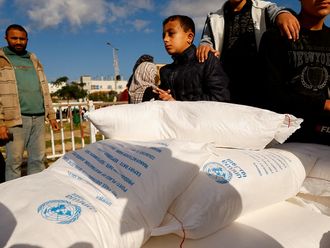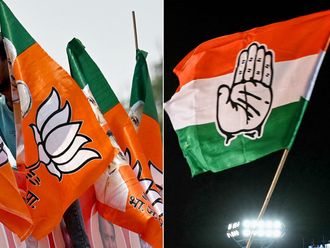After reading the latest news updates about the terror attack on Westminster, I fired up Facebook. There I was met with an atypical request: A friend who lives an eight-hour flight away in Canada had asked me to mark myself “safe”. Clicking on the notification took me to Facebook’s Safety Check page, which revealed that 31 of my friends were marked as safe, and 249 of my friends were “not marked as safe”.
The notion that these London-based friends were somehow in peril from an attack that was neutralised many hours ago seemed absurd to me in London. But it probably doesn’t seem quite so silly to people’s friends in New Zealand or Nigeria, who might not be so up to speed. Safety Check works in a fairly simple way: “If you’re in the affected area, you can tell your friends you’re safe and check to see if they’re safe, too,” the company says. But the inevitable dichotomy this process creates — if you are in London during such a catastrophe, you are presumed unsafe until you have checked in as safe — is hopelessly inadequate in a city where 8.7 million people live.
The attack on the Palace of Westminster was grave and tragic, but, as rapidly became apparent, it was also crudely undertaken and successfully contained by the police and emergency services. Four people died during the atrocity, 29 people were injured. The need for a vast network of people to check in as safe when only a small fraction of the city was in peril doesn’t stand up to much scrutiny. The problem is one of scale. On the mobile version of Facebook’s Safety Check page, the “affected area” shows a map encompassing as far north as Watford, Hertfordshire, as far west as Slough, Berkshire, and as far east as Basildon. Such an area is more suited to be “affected” by a thermonuclear weapon than such a crude attack in Westminster.
In some ways, of course, it makes sense: Since the Victorian railway boom, the south-east’s growing army of commuters have come to rely on London as a place to work, but not necessarily live. This is especially the case for places such as Westminster or the City of London, which ebb and flow with the tide of civil servants or bankers each day. But Facebook friends who don’t commute to London at all, only visiting the city and “checking in” to different locations from time to time, had also marked themselves as safe, some after friends had requested them to do so. Their friends were probably compelled to enquire after Facebook chose to turn on Safety Check, the action sowing a seed of doubt. It’s the reason my friend asked me.
“London is huge so I thought it was very unlikely, but then Facebook freaks you out with those ‘not confirmed safe’ statuses,” he wrote to me on Messenger after I’d got in touch to tell him I was OK. “It’s super manipulative, and I knew it, but felt the need to go through with it anyway.” When it was launched in 2014, Safety Check was intended as a tool to let loved ones know you are safe during a natural disaster. It was inspired by the aftermath of the Fukushima earthquake and tsunami in 2011, with Facebook’s Japanese engineers wishing to develop a tool to help people make contact during and after disasters.
Facebook first turned Safety Check on for a terror attack after the Paris attacks in November 2015. As much as it was praised for its role in the French capital, it was pilloried for not using the feature for other, non-western attacks. Yet, Facebook’s corrective action has sometimes resulted in the spread of fear and falsehoods. In March 2016, Facebook pushed its Safety Check notification following a suicide bombing in Lahore to users as far away as Hawaii, New York and the UK. In Bangkok on Boxing Day 2016, users in the Thailand capital were asked to mark themselves as safe from the “Explosion in Bangkok”. Facebook’s intervention was justified by a link to a BBC news piece about an explosion rocking central Bangkok. But the link was to a video from August 2015. No such event had occurred that day, only a protest reportedly consisting of one man throwing “ping-pong bombs” and firecrackers off the roof of a government building. The problem of how to judge whether an attack is of a large enough scale is a tricky one for Facebook. Algorithmically, turning it on made perfect sense.
Last Wednesday, feeds inevitably filled with people sharing information about their whereabouts and news articles as events unfolded in Westminster. It just wasn’t the large-scale physical event that Safety Check was designed for. There is no doubt that for many Londoners, the simple act of checking in that you were safe allayed the fears of far-off loved ones. But it also spread unnecessary worry about people who were simply nowhere near the affected area. The big question for Facebook is: When can a Safety Check make people feel less safe?
— Guardian News & Media Ltd
Tim Burrows writes about culture and place for the Guardian, Vice, the Quietus and more.









